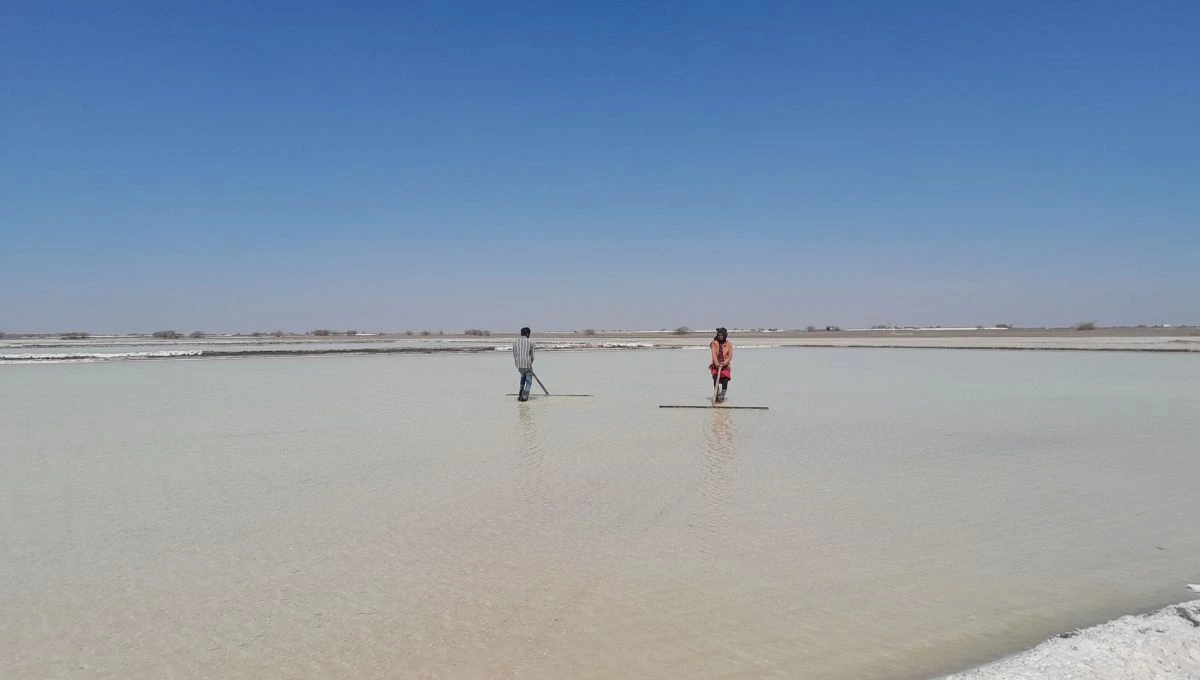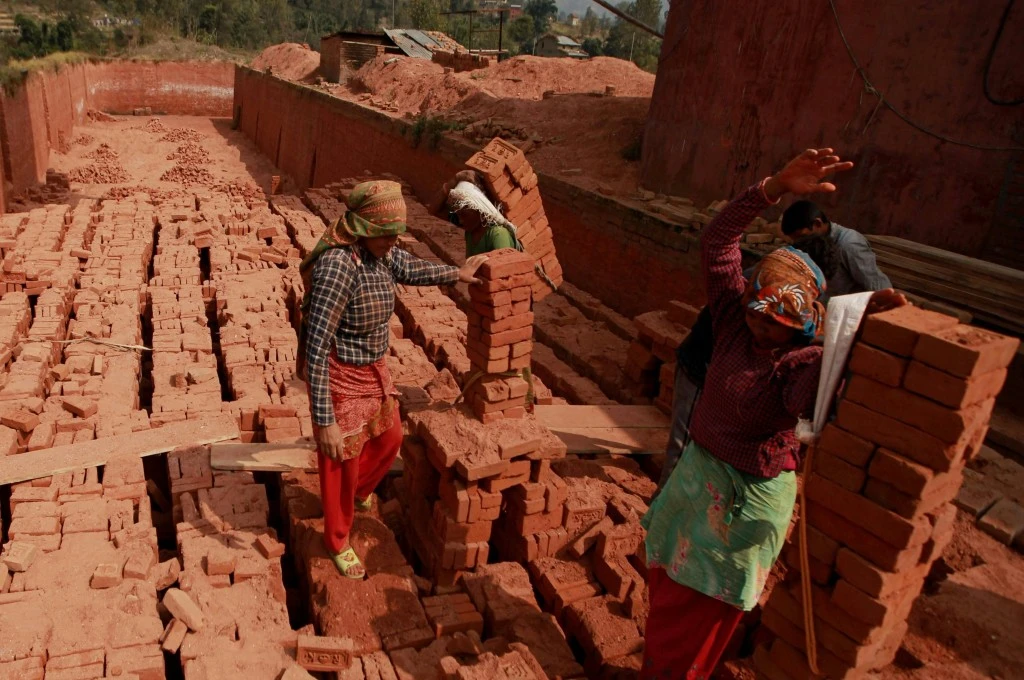The employment crisis became an unfortunate consequence, as India cycled through lockdowns of varying severity and duration during the COVID-19 pandemic. The unemployment rate, at approximately 7.2 percent in January 2020, shot up to 23.5 percent in April 2020, and fluctuated over the year to end at about seven percent (up from approximately 5.3 percent in 2019). Based on these numbers, it would seem that employment has recovered to some extent. However, a closer look at the situation reveals a clear gender bias in this recovery, especially for women from low-income households.
In October and November 2020, Dalberg conducted one of the largest studies around the socio-economic impacts of COVID-19 on women from low-income households, analysing data of more than 17,000 respondents from across 10 Indian states. The study was primarily based on telephonic interviews, supported by evidence from other studies wherever needed.
Here are some key findings from the study:

1. A higher percentage of women experienced job losses
Although women made up just 24 percent of those working before the pandemic, they accounted for 28 percent of those who lost work, and 43 percent of those yet to recover their paid work in November 2020. This gender disparity in employment recovery was found to be starkest in rural India, where women belonging to low-income households did not experience anywhere near the same level of job recovery as low-income earning men. According to the study, only four percent of men, compared to 11 percent of women, in rural India were yet to recover their paid work.
2. Women faced a greater loss in income during COVID-19
On average, women lost over two-thirds of their incomes and experienced deeper loss and slower recovery in paid work when compared to men. The income recovery rate may look similar, with men at 23 percent and women at 27 percent below their baseline incomes in September-October 2020. However, women started at a much lower baseline of INR 5,000, as opposed to INR 8,000 for men, which significantly impacted their ability to withstand the shock of income loss.
3. Unpaid labour and care work increased for women
Women’s unpaid responsibilities at home and other forms of unpaid work such as cattle rearing or farm labour are recognised as some of the biggest barriers preventing them from getting into, remaining in, and progressing in the labour force. One of the documented effects of unpaid work is having less time to perform paid work—women spend disproportionately more time than men doing unpaid care work, making it difficult for them to work otherwise.
Even before the pandemic, Indian women engaged in nearly 6.5 hours a day of unpaid work, which is three times more than the time spent by Indian men on such work. The survey showed a dramatic spike in this figure, with a 47 percent increase in unpaid labour for women and a 41 percent increase in unpaid care work for women during COVID-19.

Government welfare schemes and self-help groups (SHGs) were important in helping survey respondents navigate the pandemic. About one in three women considered the government’s support crucial in weathering the crisis, on par with perceived support from family. This is likely because of the multiple schemes the government built on and leveraged during the pandemic. For example, it launched an INR 1.7 lakh crore relief package under the Pradhan Mantri Garib Kalyan Yojana (PMGKY) scheme to bolster existing welfare schemes. The relief package supported cash transfer into Jan Dhan accounts, increased the MGNREGA wage payment, and doubled collateral-free loans for SHGs.


While, entitlements played an overall important role in supporting women who could access these through the worst phase of the pandemic, understanding what worked and what didn’t, allows us to set the stage for more targeted long-term reform.
We highlight the following three policy interventions to mitigate the economic impact of the pandemic on women:
1. Expanding the reach of MGNREGA
Our research revealed that MGNREGA supported 1.2 crore women during the crisis. It also indicated a need to increase the programme’s reach across the country. However, there is already a gender disparity at the enlistment stage of MGNREGA—as many as 27 percent of rural, low-income women in our study were not listed on the household MGNREGA card, as compared to 20 percent of low-income men. Therefore, enlistment drives that specifically target women need to be undertaken to increase their enrolment numbers for the scheme. Additionally, increasing the number of working days for women could also help increase the programme’s impact.
2. Aiding economic recovery through existing relief programmes
Several studies1,2, including our own, have found there to be a limited impact of SHG membership on economic outcomes. Our study suggests that even though the percentage of SHG women employed before the pandemic was 12 percent more than women with no SHG affiliation, more of them lost paid work, saw a greater decline in their incomes, and recovered more slowly.
The existing DAY-NRLM programme needs to focus on supporting the economic recovery and resilience of women in SHGs.
However, SHGs served as a reliable borrowing channel for both—its members and the women in the community. Therefore, it would be useful to strengthen their resilience by focusing on economic recovery and market linkages via the existing Deendayal Antyodaya Yojana-National Rural Livelihoods Mission (DAY-NRLM)—a poverty relief programme of the Central government. Supported partially by the World Bank, it aims to create institutional platforms that enable the rural poor to increase their household incomes through sustainable livelihood practices, and better access to financial services. The scheme was started with an agenda to cover seven crore rural poor households via SHGs and federated institutions.
The existing DAY-NRLM programme needs to focus on supporting the economic recovery and resilience of women in SHGs. It would also be valuable for SHGs, in turn, to actively invest in women with relevant technical and managerial training to build their business acumen and skills. They could also support women entering the digital marketplace by training them or giving them online platforms to sell products and acquire raw materials.
3. Building social assistance programs for informal workers
The government needs to intentionally focus on building social assistance programs for informal workers, specifically domestic workers—who have been the slowest to regain employment, with 18 percent still waiting for jobs—and casual labourers, whose incomes still lag 33 percent behind pre-pandemic levels. This social assistance can take the form of universal child grants, maternity benefits, and social pensions. If used with alternative approaches, such as region-specific assistance programmes for urban low-income neighbourhoods, it has the potential to reduce distress.
Women are uniquely situated when crises occur, both in the disproportionate impact they face and in how they take on caregiving and other duties that support society at large. The pandemic has further exposed women’s precarious economic security. Additionally, income loss has negatively impacted women’s health. For instance, one in ten women surveyed reported not having enough food. They also faced a lack of access to contraceptives and menstrual hygiene products. Therefore, supporting women’s employment requires an integrated approach.
While it is necessary to consider job availability and fair wages, health and caregiving infrastructure, strong government support, and access to information, opportunities, and markets are equally important. Making gender-responsive changes in policy with the right investments could make a drastic difference in supporting women who want to work. And, it is imperative that we do this now.
—
Footnotes:
- Shimamura, Yasuharu & Lastarria-Cornhiel, Susana. (2010). Credit Program Participation and Child Schooling in Rural Malawi. World Development. 38. 567-580.
- Deininger, Klaus & Liu, Yanyan. (2009). Longer-Term Economic Impacts of Self-Help Groups in India.
—
Know more
- Read more about women and COVID-19 in India.
- Understand how reduced demand for women’s labour in agriculture has impacted their workforce participation.
- Read this series about how COVID-19 has impacted women working in informal enterprises, SHGs, and other frontline occupations.
Do more
- Access Dalberg’s learning on pandemic related impacts across specific themes and demographics visit here.
- Learn about the work of civil society organisations such as Solidarity Foundation and People’s Archive of Rural India in bringing the voices of marginalised women and other minorities to the fore.
- Read more about the Right to Food campaign in India, which seeks to universalise PDS access.





